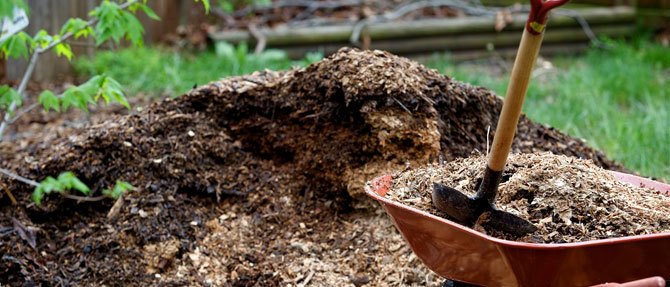By Nicola Kawana
Typical spring, inconsistent temperatures, a spectacular thunderstorm, windy wind, the occasional unannounced downpour and random hot blasts from the sun. It was the sun bit which prompted a quick change in my daily gardening attire. Shedding my well-loved home knit jumpers in favour of shorts, singlet and sunhat, with lashings of sun screen of course. It was a timely reminder that I’m not the only garden dweller in need of protection from the sun. Our most vital player also needs a bit of summer prep, the good earth itself.
 I’m not a fan of naked soil. Apart from being a weed magnet, it’s prone to damage from the elements, particularly sun and wind. The top layer is the skin so to speak of the much and varied life which lies beneath, a thriving community of macro and micro-organisms. The macro are the crawling and slithering dudes. Worms, slaters, earwigs, beetles and even flies. The micro are the teeny dudes, fungi and bacteria.
I’m not a fan of naked soil. Apart from being a weed magnet, it’s prone to damage from the elements, particularly sun and wind. The top layer is the skin so to speak of the much and varied life which lies beneath, a thriving community of macro and micro-organisms. The macro are the crawling and slithering dudes. Worms, slaters, earwigs, beetles and even flies. The micro are the teeny dudes, fungi and bacteria.
Now, if we have a nice layer of organic matter, which in nature will be fallen leaves, dead plants and rotting branches, then these little critters will feed on this, excreting it as humus which provides the nutrients that keep our plants happy and well nourished.
I know it’s geeky and I could just say now is the time to mulch your garden, but it’s so much more exciting when we know we are supporting a whole society of good fellas that in turn support us in our endeavours to grow. And while mulch makes excellent bug kai, it also does a mighty fine job at suppressing weeds. If you fancy, you could add a layer of cardboard underneath the mulch, it should give you a few months free from weeding, and at this time of year when the list of garden tasks seems endless, a weeding break is a blessing indeed.
 When choosing mulch I go for a combo of aesthetically pleasing and deeply nourishing and often these can be found in one’s backyard. In autumn it is the fallen leaves from my gigantic pear tree which blanket the ground, while our entire xmas tree gets re-purposed in the New Year. The pine needles for mulching around the blueberry bushes, the thinner branches add to the carbon layer in the compost, while the trunk becomes next winter’s firewood. Grass clippings (in a fine layer), straw, shredded bark, wood shavings and seaweed are among many other option.
When choosing mulch I go for a combo of aesthetically pleasing and deeply nourishing and often these can be found in one’s backyard. In autumn it is the fallen leaves from my gigantic pear tree which blanket the ground, while our entire xmas tree gets re-purposed in the New Year. The pine needles for mulching around the blueberry bushes, the thinner branches add to the carbon layer in the compost, while the trunk becomes next winter’s firewood. Grass clippings (in a fine layer), straw, shredded bark, wood shavings and seaweed are among many other option.
So, this spring I have been busy spreading the good stuff on all of my exposed bits.
I barrowed 3 cubic metres of arborists mulch on my ornamentals and emptied a large bag of pea straw on my edibles. The aged arborists mulch has a combination of leaves, twigs, bark and shredded wood. I think it looks pretty while doing a stellar job and smelling delicious to boot. Not only will the mulch protect the soil surface from the sun it will go a little way to help retaining some moisture in what looks to be another scorching summer.

